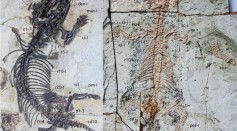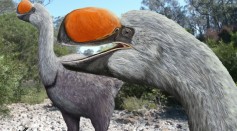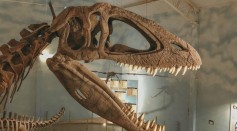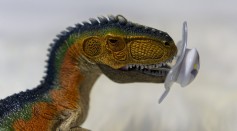Paleontology
Giant Pterosaur with Neck Longer Than Giraffes' Flew 100 Million Years Ago, Scientists Believe

Fossils of Ancient Mammal-Like “Scratch Diggers” Found in China
Scientists Discover How Ancient Long-Necked Reptiles Lived in the Late Triassic Era

Large Pre-Historic Flightless Bird Had a Brain Squeezed In Tight Cranial Space
Prehistoric Killing Machine: The Truth About the Anteosaurus
Dinosaurs Migrate from South America to Greenland Due to Dip in Atmospheric CO2
Juvenile Megatheropods Like the T-Rex Played Multiple Predatory Roles
Fossilized Bony Lungs of Ancient Fish Reveals It Is as Big as Great White Shark
Skull of Prehistoric Giant Sloth Unearthed by South American Scientists

Prehistoric Pigments: How Melanin Shaped Avian and Mammalian Evolution
Could Acidic Volcanoes Have Teemed with Early Life? Study Says They Might Have
Researchers Discover ‘Exquisitely’ Preserved Skull of a Dinosaur that Lived Over 70 Million Years Ago

Baby Tyrannosaurs Were the Size of Border Collie Dog, Study
Slow Demise of the Devonian Era
Most Popular

How Technology Is Changing the Real Estate Industry?

How a Plant-Based Diet Can Protect Against Breast Cancer: Insights from Nutrition Research

Study Reveals High Turnover in Scientific Research Careers: What This Means for Future Scientists

Nikolay Karpenko Biography, Photo, Career, Accomplishments





